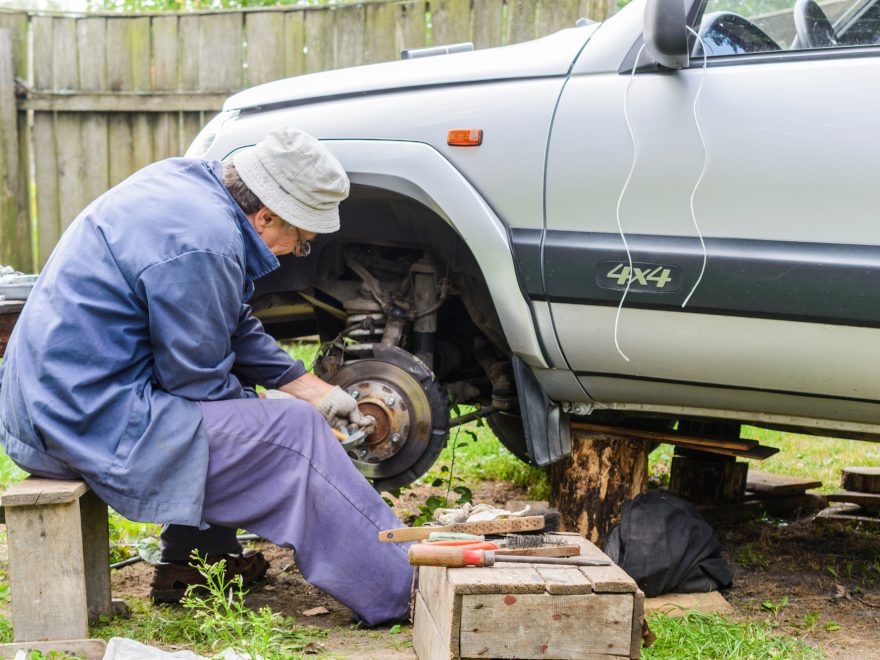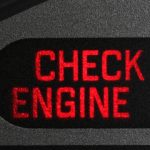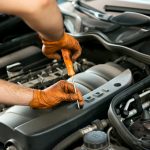It’s frustrating when your car has a problem that needs fixing because, for most people, it means having to open your wallet.
And with the average cost of an auto repair said to be costing over $350 per repair in most states, families on low incomes are likely to struggle if they have to take their car to a dealer for repairs.
But if you’re pretty good with your hands, you might not need to spend a penny on labor if you can have a go at making repairs yourself.
So why not give DIY auto repair a try? And to help you out, we’ve got 6 easy repair hacks and tricks to remember the next time your car needs some TLC.
Find Your Online Car Repair Manual Today! ->>
1. Replace a Drive Belt
A drive belt in your car’s engine loops around various elements like the wipers, battery charging unit and cooling. You might have just the one (a serpentine belt) or several, depending on the age and model of your car.
If your car engine sounds like it’s squealing, chances are it’s time for a belt change. Remember to do a visual inspection, too, as it may still be worn and ready to break even if it doesn’t make a noise, which isn’t something you’ll want to deal with as you’re driving.
You’ll need some basic tools – a socket wrench, for instance – before you start. As the engine in each car will be designed differently, remember to consult the engine belt diagram for your car to ensure you can remove (and replace) your belt properly.
2. Change Your Battery
Is your car slow to start, or not starting at all? Or has your car battery been installed for four years or more? It’s time to swap out your battery.
Well, this is one of the easier DIY auto repair jobs to attempt. Simply pop open the hood of your car and use a multimeter to test whether your battery still has life left in it. It may simply be flat, so it’s certainly worth charging your battery first before you replace it.
If you can charge it up, great! If not, disconnect the negative terminal on your battery first, and then disconnect the positive, in that order. You will probably have to use a wrench on the terminals to be able to remove them.
Clean up the terminals and battery tray, and then install the new battery and attach the terminals (positive first, then negative).
3. Swap Out Brake Pads
Unless you plan on driving into everything you see, having efficient and working brake pads in your car is essential and it’s important to make the right brake pad diagnosis if you feel they might need changing.
A lot of the time, if your brake pads are squeaking, it means they’re due for a replacement.
You’ll need some basic tools like a socket wrench and a car jack to lift up your car. You will also need to remove the car wheels to access the pads. Consult your car model’s repair manual or an online guide for detailed instructions.
If you don’t change your faulty or worn out brake pads, you might be liable for damages if you have an accident. A motorcycle and car accident can cost money and lives, so be sure to seek proper legal advice if you end up in that situation.
4. Locate and Seal Coolant Leaks
It’s pretty easy to spot a coolant leak because when you move your car after a period of time, you’ll notice a pool of liquid on the ground. The color of the leak will help to identify the problem.
Pop open the hood and have a look inside to try and locate the actual source of the leak; the color will help you here, so be sure to consult your car repair manual for a detailed look of your car engine and components.
If you’re able to find your leak, it’s then a simple job to replace or repair.
5. Replace Air and Fuel Filters
Filters on your car help to block dirt from getting into areas they shouldn’t while we’re driving. You don’t exactly want grime or debris clogging your engine or mixing with your fuel, after all.
A clogged filter might also stop enough air getting to your engine, and as your engine needs an air mix to run, this is enough to prevent your car from working.
It’s a very simple procedure to change your air filter. Consult your car manual for specifics, but you will usually find the filter on the side of your engine. You will need to unscrew the cover, replace the filter, and screw it back on.
The fuel filter is a little harder, but don’t be put off. You will usually find the filter connected to your fuel line, underneath your car. Follow these instructions, or consult your repair manual for more information.
6. Change Your Spark Plugs
We’ve talked before about the importance of having good spark plugs. Spark plugs help to start your car by igniting the gas/air mixture in your engine.
If your car suddenly won’t start or the mileage you’re getting out of your car reduces, the spark plugs might need to be replaced. Thankfully, this is pretty easy and should save you about an hour or more in labor costs.
Under the hood of your car, you should see up to 8 wires at the top (depending on how many cylinders your car engine has) going to various parts of your engine. As long as your engine is cool, pull each wire off and use a socket wrench to remove each plug.
Replace each worn spark plug as you remove them, replacing the wires in the correct order as you go.
Don’t Be Scared of DIY Auto Repair
We’re not suggesting you strip down your vehicle from top to bottom, but there’s a lot of simple DIY auto repair tricks you can perform yourself without having to spend a single dollar on labor.
And the good news is that cars are pretty versatile. You’re unlikely to cause a huge amount of damage, even if you struggle to do it yourself, so why not give the repairs a go yourself?
With a bit of trial and error, the tricks listed above should save you some serious money.
Got your own DIY auto repair tips to share? Make sure to leave them in the comment section below.







